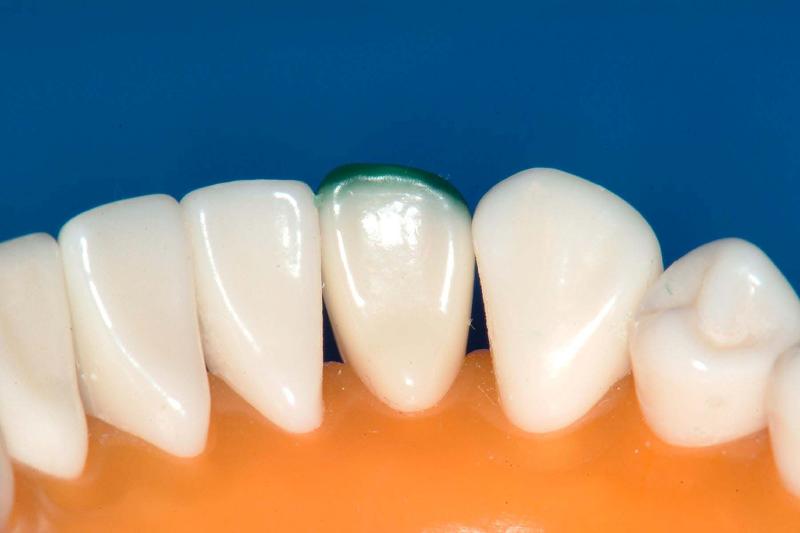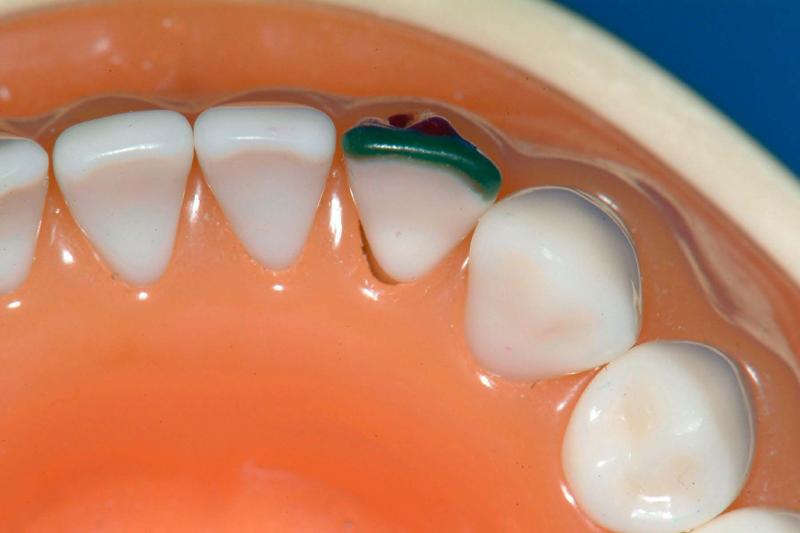

The enamel thickness of the DS was significantly thicker than that of the normal incisor at the center of the labial surface, the average of which was 0.91 mm in DS and 0.73 in NDS incisors. There were no significant differences of the enamel thicknesses at the three points of the labial surface, such as mesial and distal marginal ridges and the central ridge. The mesial marginal ridge (MMR) was significantly higher than the distal marginal ridge (DMR) on both OES and DEJ of DS incisors.

On the DEJ, DS incisors had more sharp and clear ridges than on the OES.

Mesiodistal and buccolingual diameters on both OES and DEJ were measured for the comparison of OES and DEJ structures. Enamel thickness of the labial surface was also measured in these specimens. We measured the height of the labial marginal ridges of the upper central incisors, which had double-shovel (DS) and no double-shovel (NDS) on the outer enamel surface (OES) and dentino-enamel junction (DEJ) using a 3D scanner. The labial surface of the upper central incisor has mesial and distal marginal ridges, and these vary in form and development. The work cannot be changed in any way or used commercially without permission from the journal.
#LABIAL VEEER LAM LICENSE#
These results indicate that it is essential to properly consider enamel thickness and area when interpreting electron paramagnetic resonance tooth dosimetry measurements to optimize the accuracy of dose estimation.This is an open-access article distributed under the terms of the Creative Commons Attribution-Non Commercial-No Derivatives License 4.0 (CCBY-NC-ND), where it is permissible to download and share the work provided it is properly cited. Simulation data agreed well with this result. Linear regression showed that the enamel area at each measurement position significantly affected the radiation-induced electron paramagnetic resonance signal amplitude (p < 0.001). Following the measurements, the enamel thickness and area of each tooth were measured using micro-focus computed tomography. Ten isolated incisors were irradiated using well-characterized doses, and their radiation-induced electron paramagnetic resonance signals were measured. The present study aimed to determine the relationships among enamel thickness, enamel area, and measured electron paramagnetic resonance signal amplitude with a view to improve the quantitative accuracy of the dosimetry technique. In vivo L-band electron paramagnetic resonance tooth dosimetry is a newly developed and very promising method for retrospective biodosimetry in individuals who may have been exposed to significant levels of ionizing radiation. This result suggests that the labial enamel thickness can be predicted from the mesial enamel thickness obtained by the X-ray photograph. The mesial enamel thickness and the labial enamel thickness showed a significant correlation at both the middle third portion and the cervical third. The enamel thicknesses of lateral incisor and canine were thick enough to be 0.5 mm from the middle thirds to the incisal edge the same as that of central incisor, but thinner at the cervical thirds as compared with the central incisor, which suggests that the enamel at the cervical region is better to be rduced within 0.25 mm in order to avoid exposure of the dentin. The enamel reduction amount in the upper central incisor can be 0.3 mm at the cervical third region and then increased to 0.5 mm toward the incisal edge the same as the guidance reported for Japanese. The labial enamel thickness of the maxillary central incisor, lateral incisor and canine of Chinese teeth obtained from Shanghai was measured for serving as a guide for porcelain laminate veneer restoration in China.


 0 kommentar(er)
0 kommentar(er)
